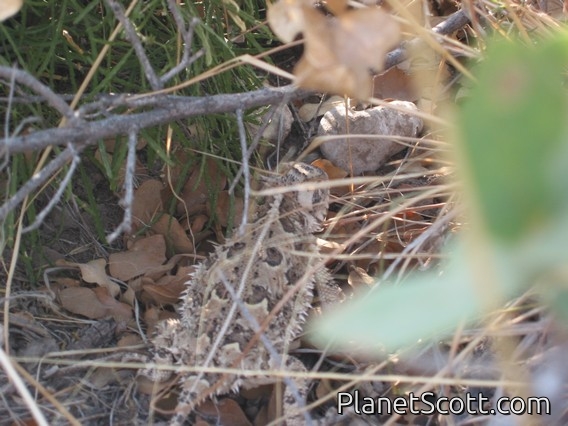Texas Horned Lizard (Phrynosoma cornutum)

Texas Horned Lizard (Phrynosoma cornutum)
×


Texas Horned Lizard (Phrynosoma cornutum)
About Texas Horned Lizard (Phrynosoma cornutum)
- Kingdom: Animals
- Phylum: Chordates
- Class: Reptiles
- Order: Lizards and Snakes
- Family: Iguanas
The Texas horned lizard is one of about 21 North American species of spikey-bodied reptiles called horned lizards, all belonging the genus Phrynosoma. It occurs in south-central regions of the US and northeastern Mexico, as well as several isolated introduced records and populations from Southern United States. Though some populations are stable, severe population declines have occurred in many areas of Texas and Oklahoma. The Texas spiny lizard may be confused for a Texas horned lizard due to its appearance and overlapping habitat. Because the Texas horned lizard is listed as a threatened species in the state, it is illegal to pick up, touch, or possess them in Texas.
Source: Wikipedia
Lifelists
Trips
No trip reports available.Visits
-
2002-06-25
Guadalupe Mountains National Park, United States of America

